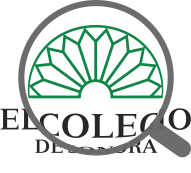| dc.contributor.author | Salazar Solano, Vidal | |
| dc.coverage.spatial | MX-SON | en-US |
| dc.creator | SALAZAR SOLANO, VIDAL; 44276 | |
| dc.date | 2007-05-01 | |
| dc.date.accessioned | 2022-06-28T19:42:48Z | |
| dc.date.available | 2022-06-28T19:42:48Z | |
| dc.date.issued | 2007-05-01 | |
| dc.identifier | https://regionysociedad.colson.edu.mx:8086/index.php/rys/article/view/551 | |
| dc.identifier | https://doi.org/10.22198/rys.2007.39.a551 | |
| dc.identifier.uri | https://regionysociedad.colson.edu.mx:8086/index.php/rys/article/view/551 | |
| dc.identifier.uri | https://doi.org/10.22198/rys.2007.39.a551 | |
| dc.identifier.uri | https://repositorio.colson.edu.mx/handle/2012/45775 | |
| dc.description.abstract | Strategies for local economic development promote the reinforcement processes of comparative advantages, shown in certain territories, which focus on the so-called endogenous factors. Among the outstanding ones are the historical and cultural factors which have stimulated the growth of the bacanora industry. There is historical evidence of the persistence of this industry, despite attempts to eradicate it for more than three hundred years, demonstrating that this is not only due to economic factors, but also to its role in the cultural and traditional practices embedded in the population of the Sonoran mountain region. Traditions and culture linked to the production and consumption of bacanora are indicators of the high potential for this industrial activity and its constituency. | en-US |
| dc.description.abstract | Las estrategias de desarrollo económico local promueven los procesos de fortalecimiento de las ventajas comparativas, manifestadas en determinados territorios, y se centran en los denominados factores endógenos. Entre éstos destacan los históricos y culturales que han estimulado la industria del bacanora. La evidencia histórica indica que la persistencia de esta actividad, pese a los intentos de erradicación de la que fue objeto a lo largo de trescientos años, no sólo responde a factores económicos, sino a su rol dentro de las prácticas culturales y tradicionales de más arraigo entre la población serrana de Sonora. La cultura y las tradiciones ligadas a la producción y consumo de bacanora son indicadores del gran potencial de esa industria y su consolidación. | es-ES |
| dc.language.iso | spa | |
| dc.publisher | El Colegio de Sonora | es-ES |
| dc.relation | https://regionysociedad.colson.edu.mx:8086/index.php/rys/article/view/551/591 | |
| dc.rights | Derechos de autor 2017 Vidal Salazar Solano | es-ES |
| dc.rights | https://creativecommons.org/licenses/by-nc/4.0/ | es-ES |
| dc.rights | info:eu-repo/semantics/openAccess | es-ES |
| dc.source | 2448-4849 | |
| dc.source | 1870-3925 | |
| dc.source | región y sociedad; Vol. 19 No. 39 (2007): May-August | en-US |
| dc.source | región y sociedad; Vol. 19 Núm. 39 (2007): mayo-agosto | es-ES |
| dc.subject | Bacanora | en-US |
| dc.subject | Mescal | en-US |
| dc.subject | Local development | en-US |
| dc.subject | Industrial normalization | en-US |
| dc.subject | Prohibition| | en-US |
| dc.subject | Bacanora | es-ES |
| dc.subject | Mezcal | es-ES |
| dc.subject | Desarrollo local | es-ES |
| dc.subject | Normalización industrial | es-ES |
| dc.subject | Ley seca. | es-ES |
| dc.subject | Ciencias Sociales | |
| dc.subject.lcsh | Bacanora | en-US |
| dc.subject.lcsh | Mescal | en-US |
| dc.subject.lcsh | Local development | en-US |
| dc.subject.lcsh | Industrial normalization | en-US |
| dc.subject.lcsh | Prohibition| | en-US |
| dc.subject.lcsh | Bacanora | es-ES |
| dc.subject.lcsh | Mezcal | es-ES |
| dc.subject.lcsh | Desarrollo local | es-ES |
| dc.subject.lcsh | Normalización industrial | es-ES |
| dc.subject.lcsh | Ley seca. | es-ES |
| dc.title | La industria del bacanora: historia y tradición de resistencia en la sierra sonorense | es-ES |
| dc.type | info:eu-repo/semantics/article | |
| dc.type | info:eu-repo/semantics/publishedVersion | |
| dc.audience | generalPublic | |
| dc.identificator | 5 | |










